As art teachers, I believe we see the beauty in what others might perceive as trash. When I see cardboard or paper scraps being tossed out, I grab them. I get very excited and immediately think – ART PROJECT!
Today I’d like to share 3 fun recyclable art projects with you.
These projects are quick, push kids’ creativity, and help the environment all at the same time.
1. Cardboard Constructions
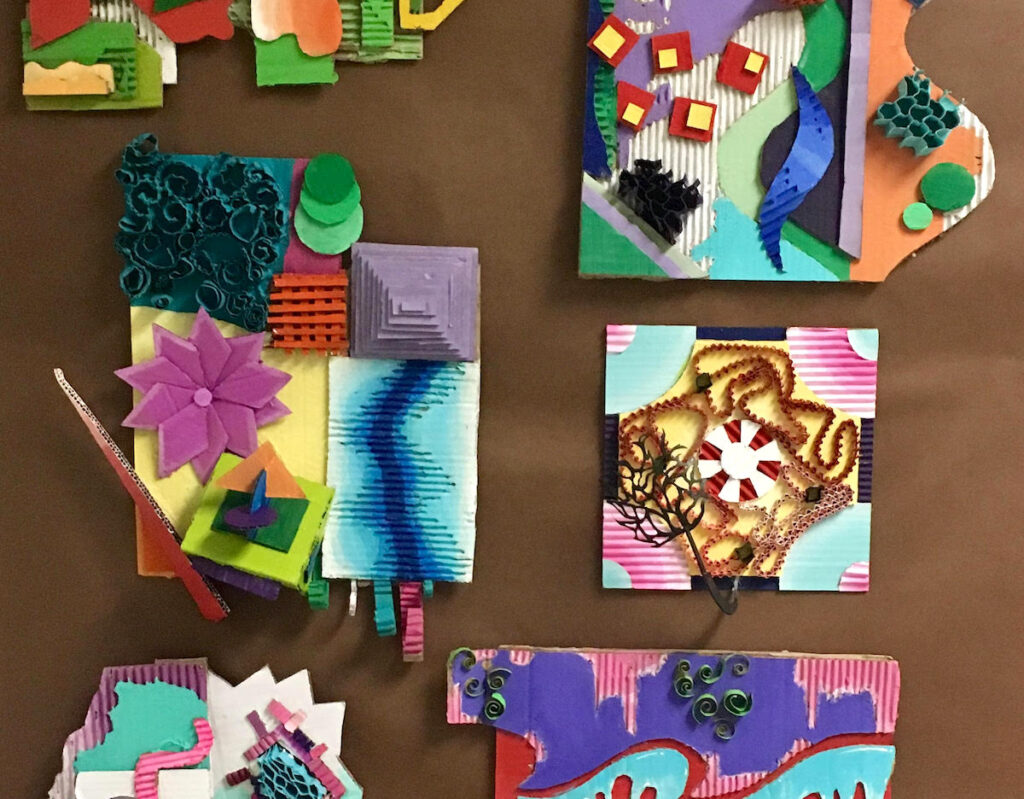
This project started out as an accident. My first year teaching, I ran out of supply money pretty quickly and found myself having to be creative with what few materials I had left. As I looked around the room, I realized I had collected quite a few cardboard boxes.
At the same time, my students were learning about geometric and organic shapes, and I was itching to teach them about tints and shades. When I came across the large-scale relief sculptures of Elizabeth Murray, the lesson emerged, and we went to town!
To start, students drew and cut out large cardboard shapes. Once each student had an initial shape, they began to create medium and small shapes, alternating between geometric and organic.
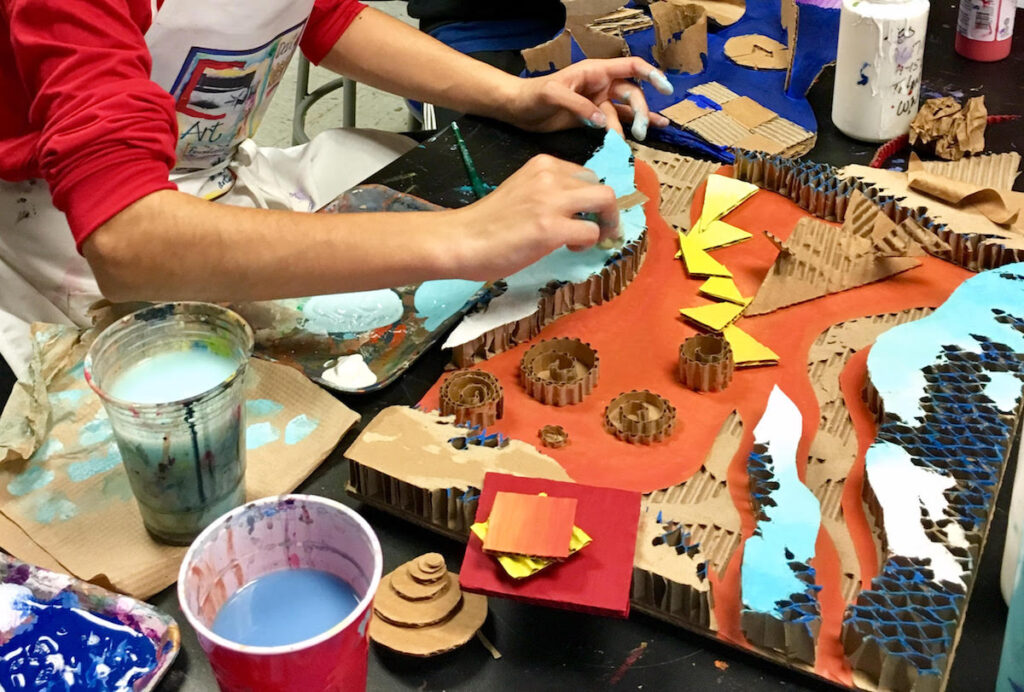
I reminded them that a variety of shapes and sizes would make for a more exciting final piece. I encouraged students to play with their pieces, rearranging them into new and exciting compositions. Once they found an arrangement they were happy with, they began gluing. We used Elmer’s glue, but for some of the larger pieces, I recommend having a glue gun center where students can adhere their pieces more quickly.
Once the cardboard forms were completed, the painting began. I had my students select a color scheme and then play around with tints and shades. It was magical! When students have the time to experiment with mixing colors and playing with gradation, it takes their final works to the next level. I recommend giving students a variety of brush sizes since the goal is to completely cover every area of the cardboard.
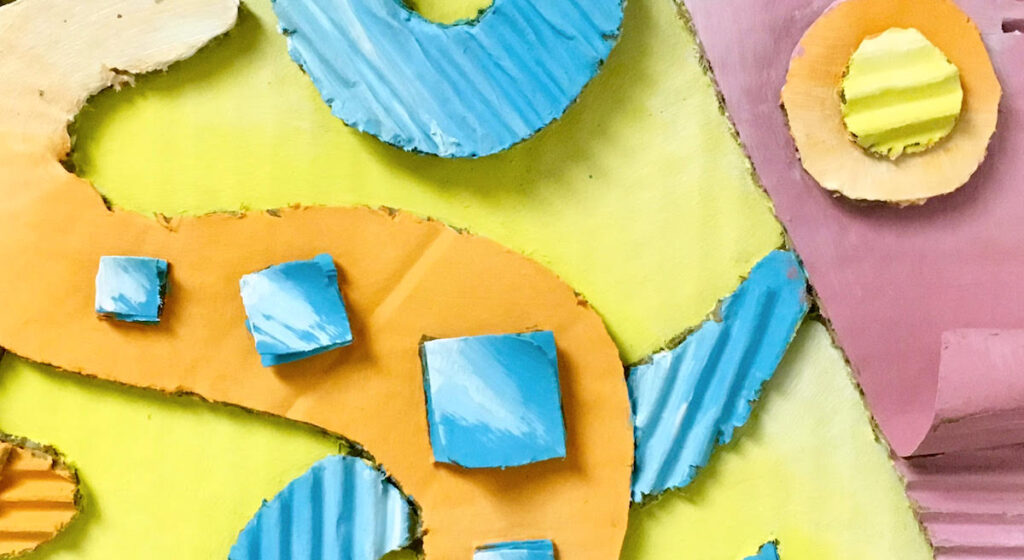
Watching students experiment with color, paint, shapes, and cardboard textures helped me realize this would become one of my most successful lessons. I think they get better each year!
Be sure to check out the Engage Your Students with Unexpected Materials PRO Learning Pack for even more great ideas!
2. Beverly Buchanan Inspired Art Shacks
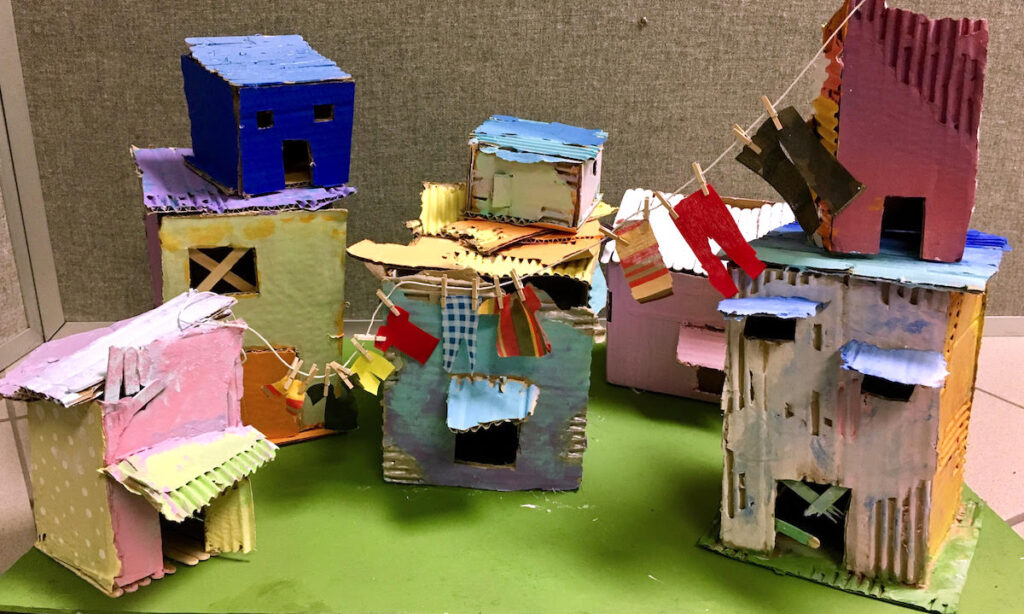
This lesson is another wonderful way to use all of that extra cardboard found around your school.
This lesson is inspired by Beverly Buchanan. I had been teaching my students about her colorful shacks for years. Taking them from 2-D to 3-D was beyond exciting.
First, students researched Beverly Buchanan’s work and completed a drawing using oil pastels. Then, they were challenged to build a 3-D version of their drawing.
Students used cardboard, popsicle sticks, toothpicks, and anything else they found that might enhance their shack.
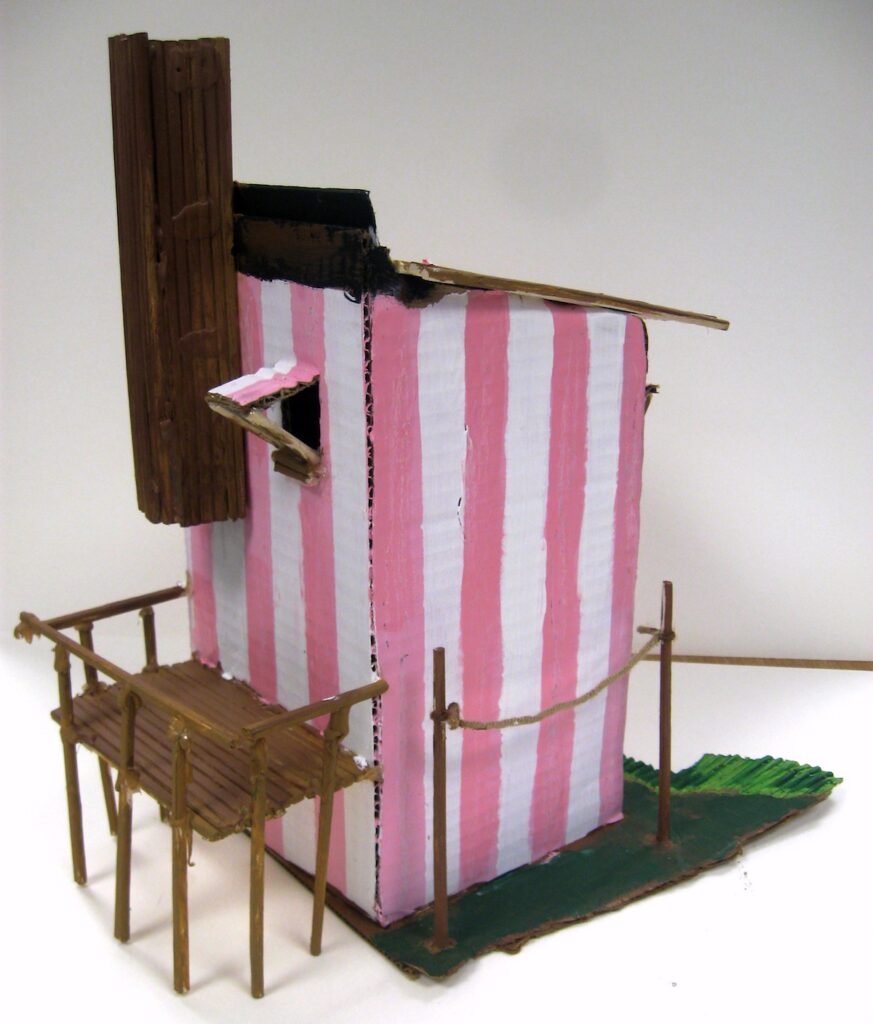
In my case, I left the lesson pretty freeform. Students were encouraged to build a uniquely personal shack. I gave no size specifications, and it was really exciting to see where these went.
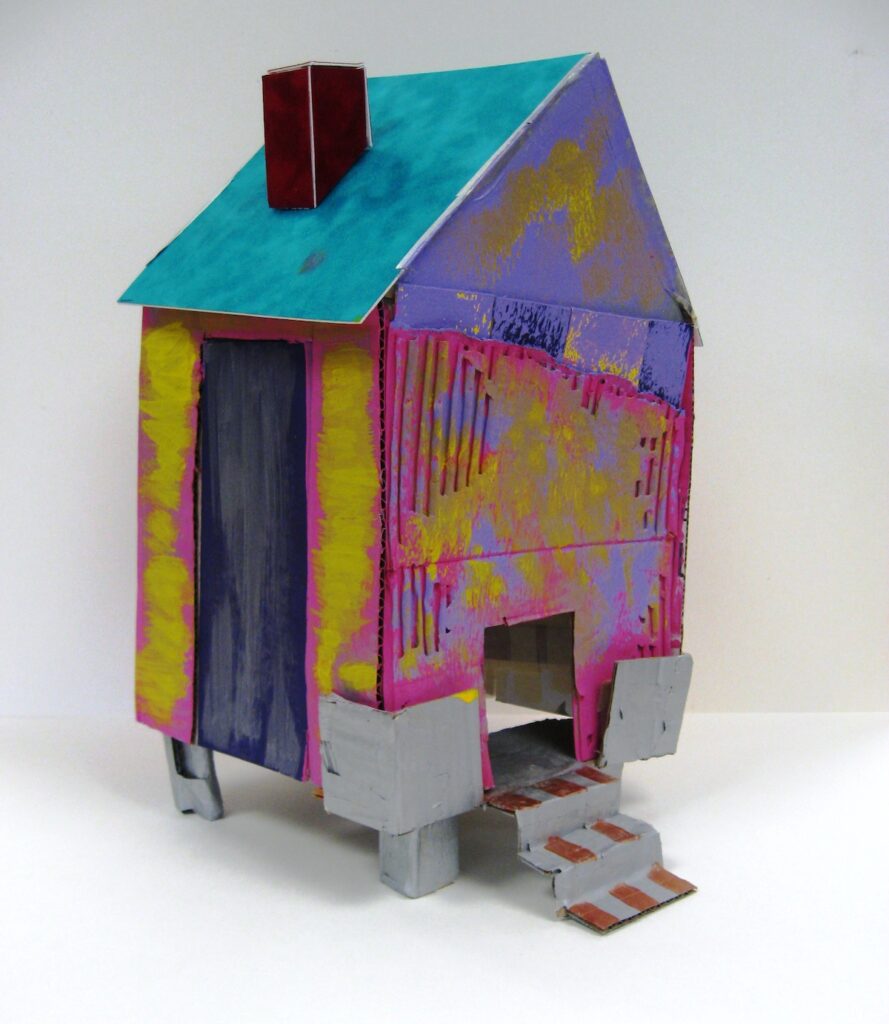
After building their houses out of torn or cut cardboard, they added detail. Some included shingles, roof tiles, fences, yards and even doorknobs. I left all of the details up to them. One group of girls actually built a town of shacks!
Finally, students added “happy” colors, inspired by Buchanan, creating a series of two related pieces.
3. Scrap Paper Sculptures
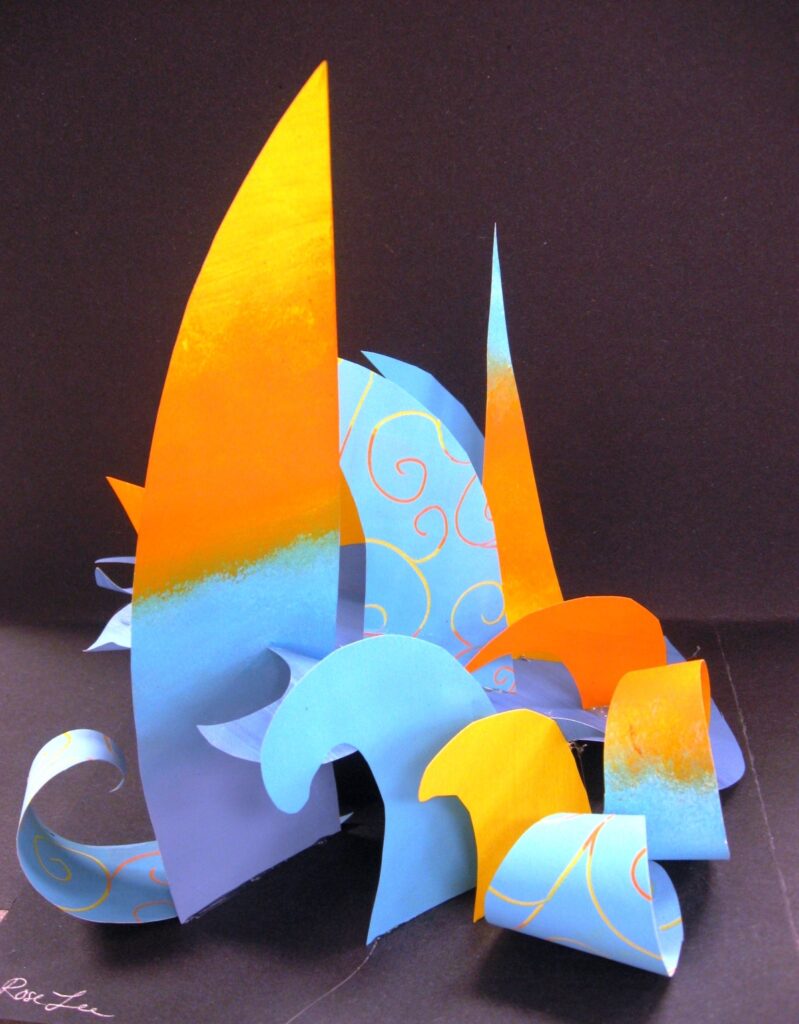
Do you find yourself overwhelmed with the amount of paper scraps found in your recycle bin week after week? I certainly do. As someone who has trouble throwing anything away, I began storing scraps in large bins in my back closet. By the end of the year, they were overflowing!
I discovered scrap paper sculptures were the perfect end-of-the-year project. Magical sculptures were created by taking this paper and manipulating it with paint, texture stamps, and mark-making materials such as graphite, oil pastel, and markers.
If you’d like to do something similar, I encourage you to save all kinds of scraps so the textures are abundant. Poster board, Bristol board, construction paper, and drawing paper all work well. To see students twist, fold, and experiment with used paper and make it come to life through art is beyond exciting.
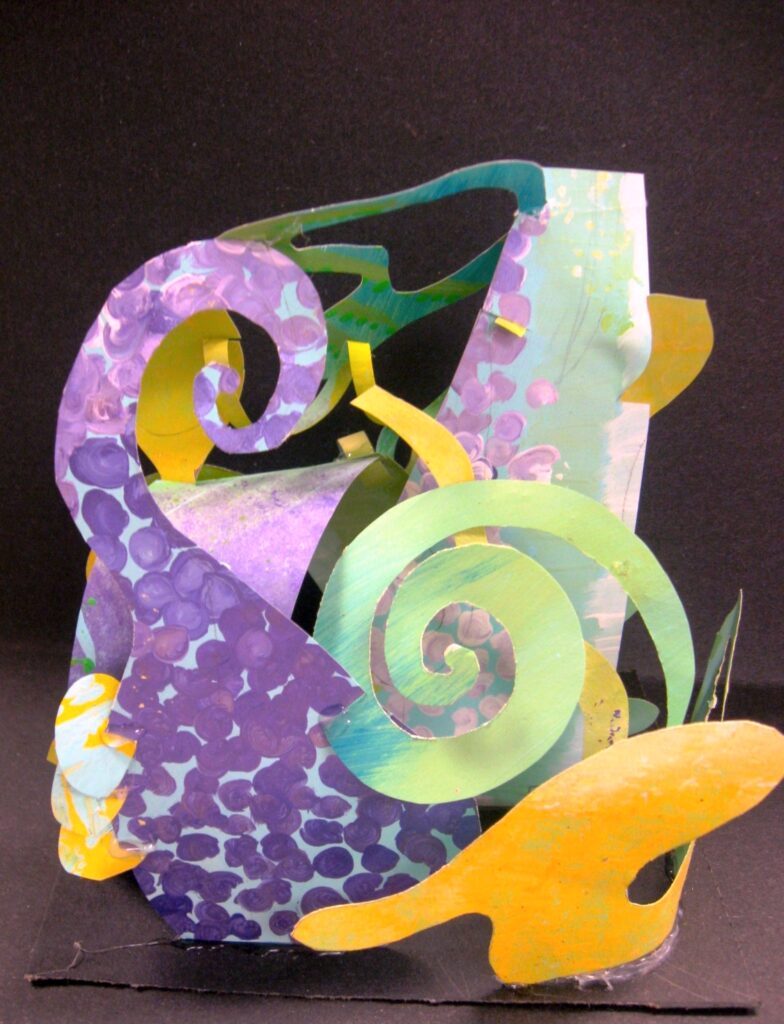
I kept this lesson pretty open-ended. Ultimately I wanted individual, unique, and creative works to literally come out of our trash bins. I have found sharing a few artists with students often takes their thinking to a new level. Consider showing work by Frank Stella and Ida Kohlmeyer. Then, to inspire their mark-making, add in artists like Cy Twombly, Helen Frankenthaler, and Basquiat. Or better yet, let them do their own research and have them create paper sculptures in the style of their selected art master. A lot of learning and a lot of fun will transpire!
I can’t wait to see what you and your students do when you give them recyclables and scraps to turn into mini-masterpieces. I’m positive they will wow you with their creativity!
Do you use any recyclable materials in your art room for specific lessons?
What other recyclable materials would you consider using with your students?
Magazine articles and podcasts are opinions of professional education contributors and do not necessarily represent the position of the Art of Education University (AOEU) or its academic offerings. Contributors use terms in the way they are most often talked about in the scope of their educational experiences.





